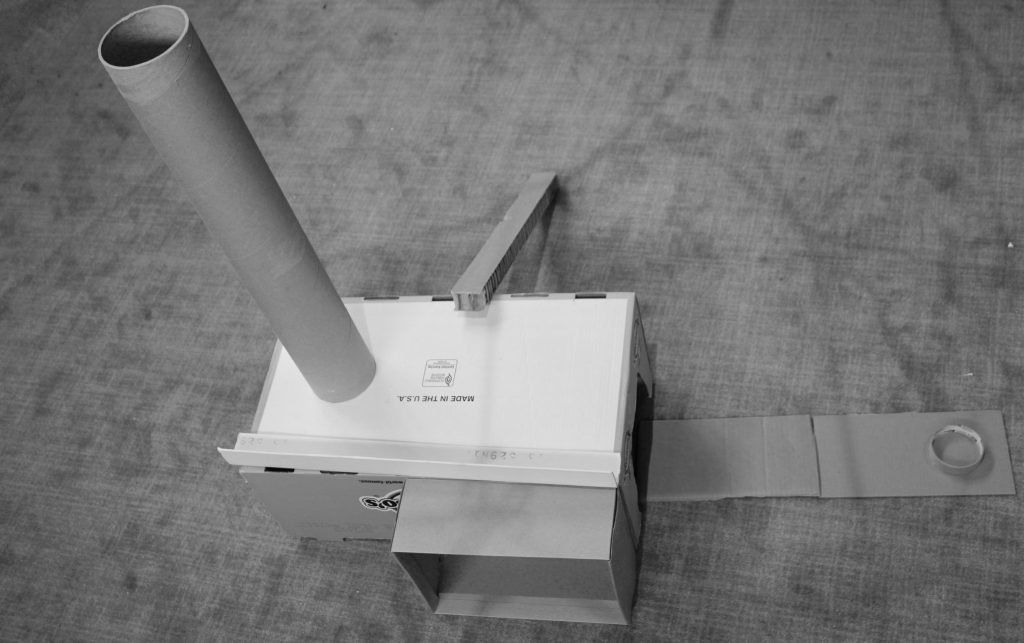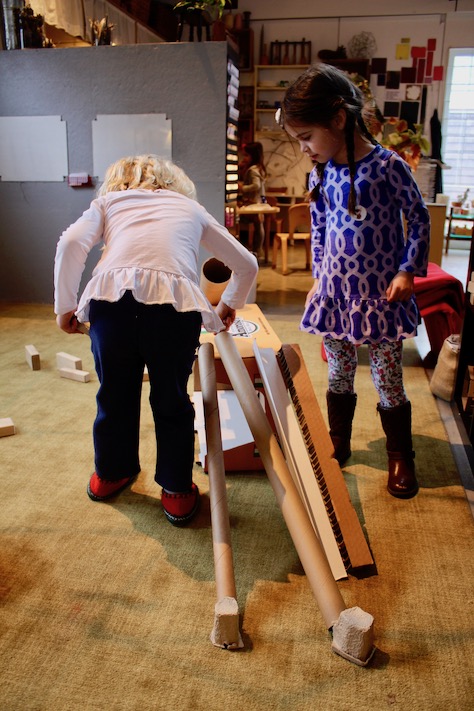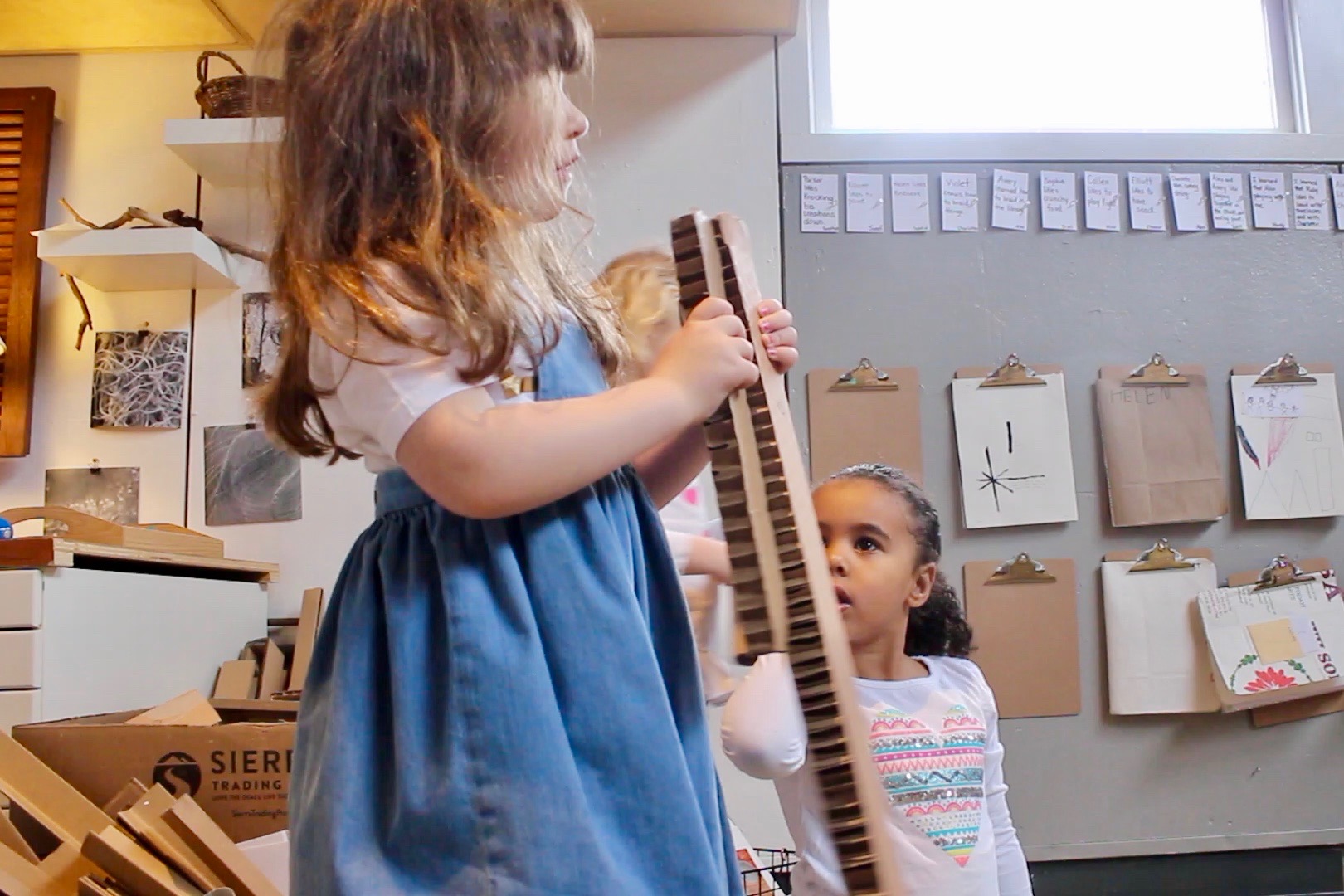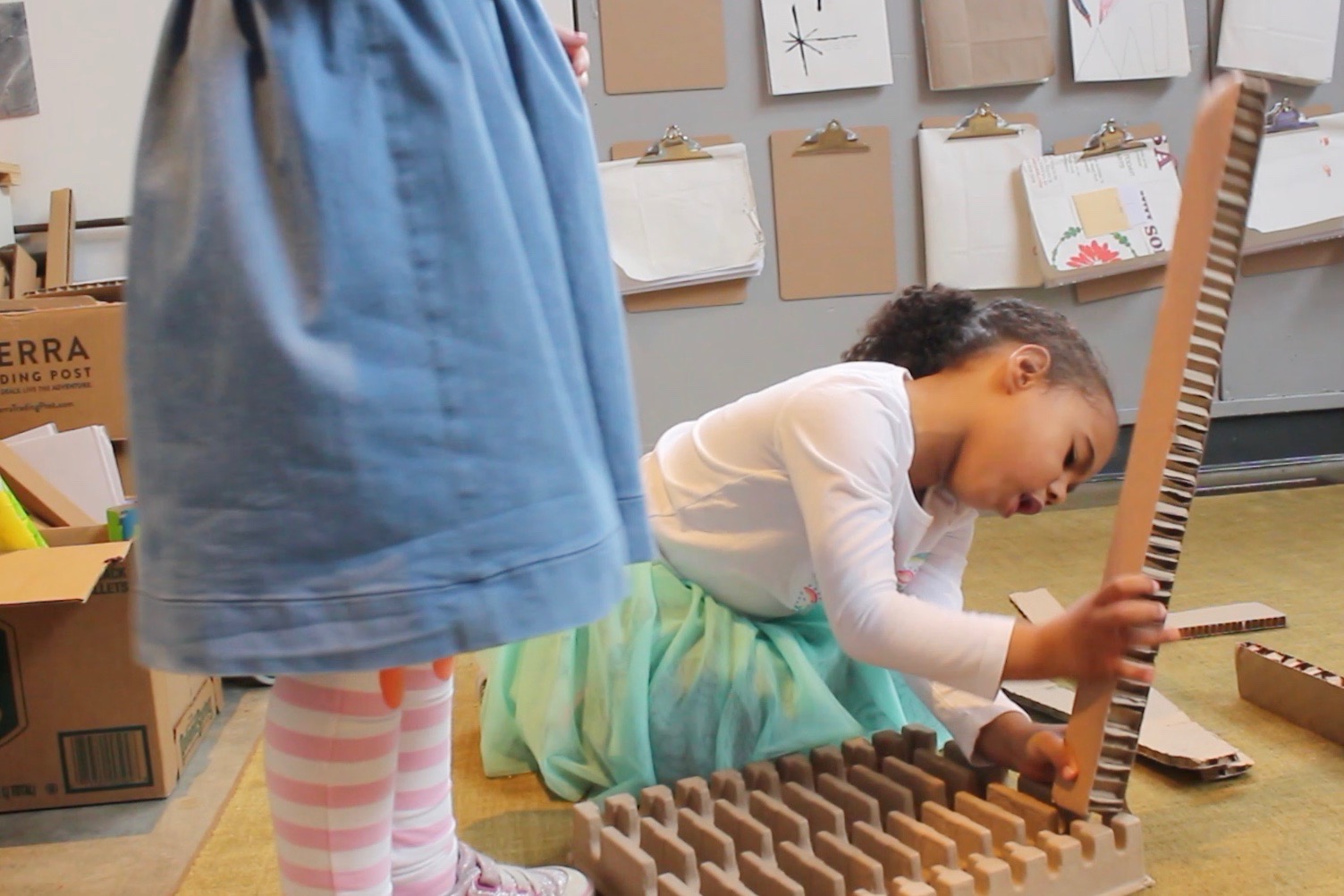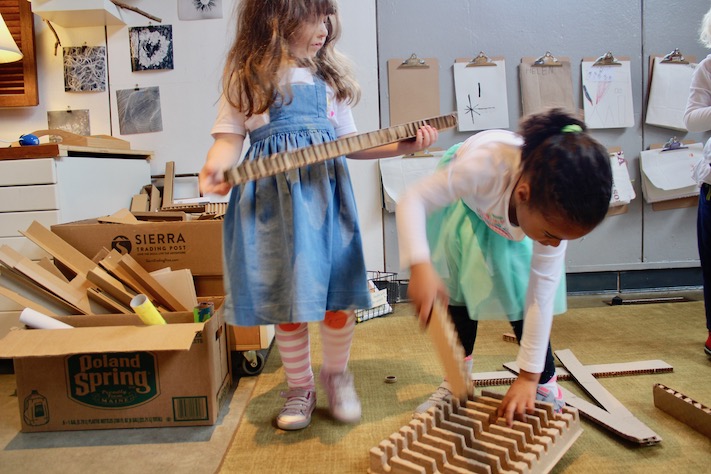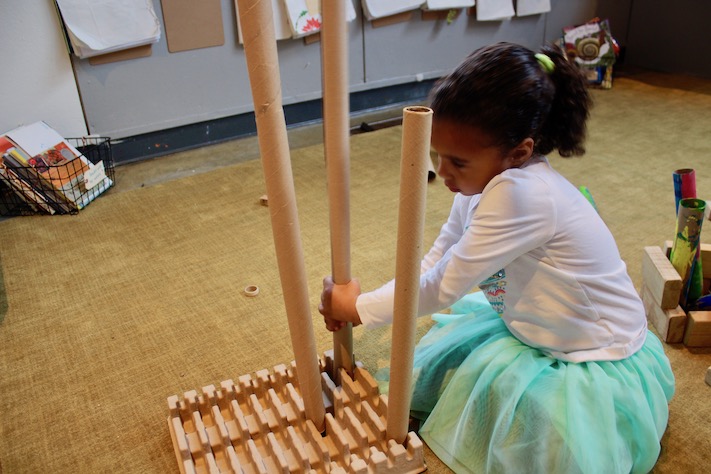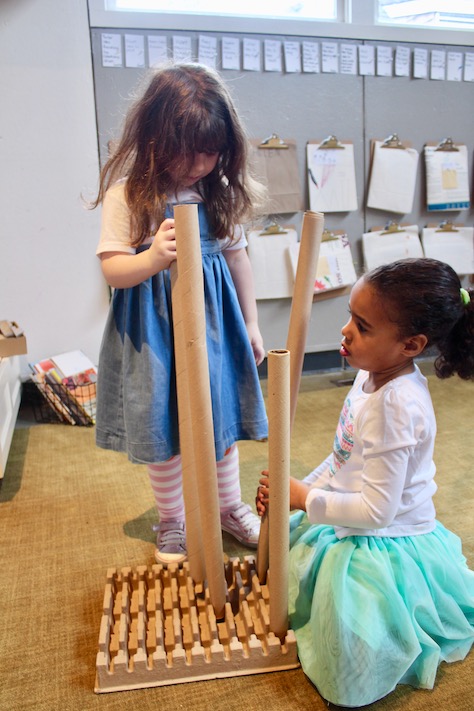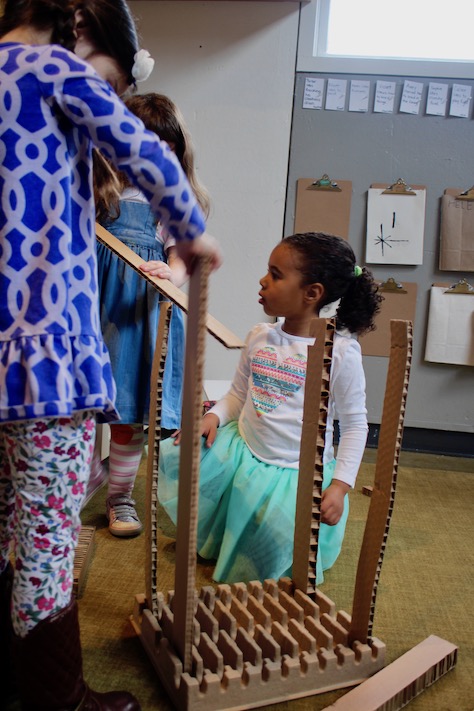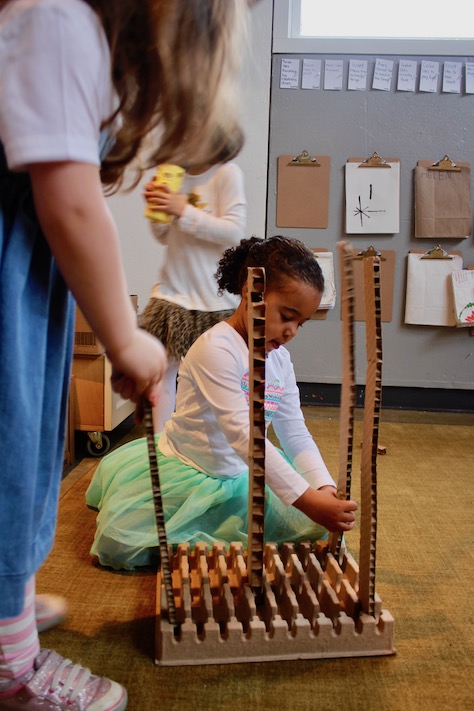Emily, can we use tape? Sofia
No, we can’t. Charlotte
How will it stay? Sofia
Flip it! Charlotte
Oh yeah, I have an idea. Hold it in place. Now we need one in the middle…no more! Sofia
Oh, here’s another long one. This is thicker. Charlotte
Oh, see how this on is a little bit smaller? … Oh, what about these tubes? Sofia
This is gonna be a great playground! We are gonna build the best playground kids can play on. Charlotte
Put one in each corner. Hey, Eleanor, this playground is gonna have a castle! Sofia
A bouncy castle? Eleanor
No, not a bouncy castle. Sofia
Maybe we can squeeze these just like I did. Charlotte
Eleanor, we just need two more [tubes]. Sofia
No, we need all of them. Eleanor
You need all? …This might work, flat pieces. Sofia
Yeah, flat might work better. Charlotte
We got all the pieces we need! Flat pieces are even better so they can have all the tubes. Sofia
Charlotte, it won’t push. Sofia
I’ll be measuring. Charlotte
I think these are just the best. Not too big and not too small. Sofia
Can I help? Alex
Sure! I think this one can fit better in the middle, Alex. Sofia
This should totally fit. Make some room for the people. Charlotte
Except this turns upside down, remember? Sofia
What in the world?! This is not a good stand. Let’s try something else. Sofia
You guys, what’s going on with you guys? Charlotte
We’re making a play structure. Eleanor
This works better. Sofia
More stable, okay. Charlotte
Totally. Sofia
